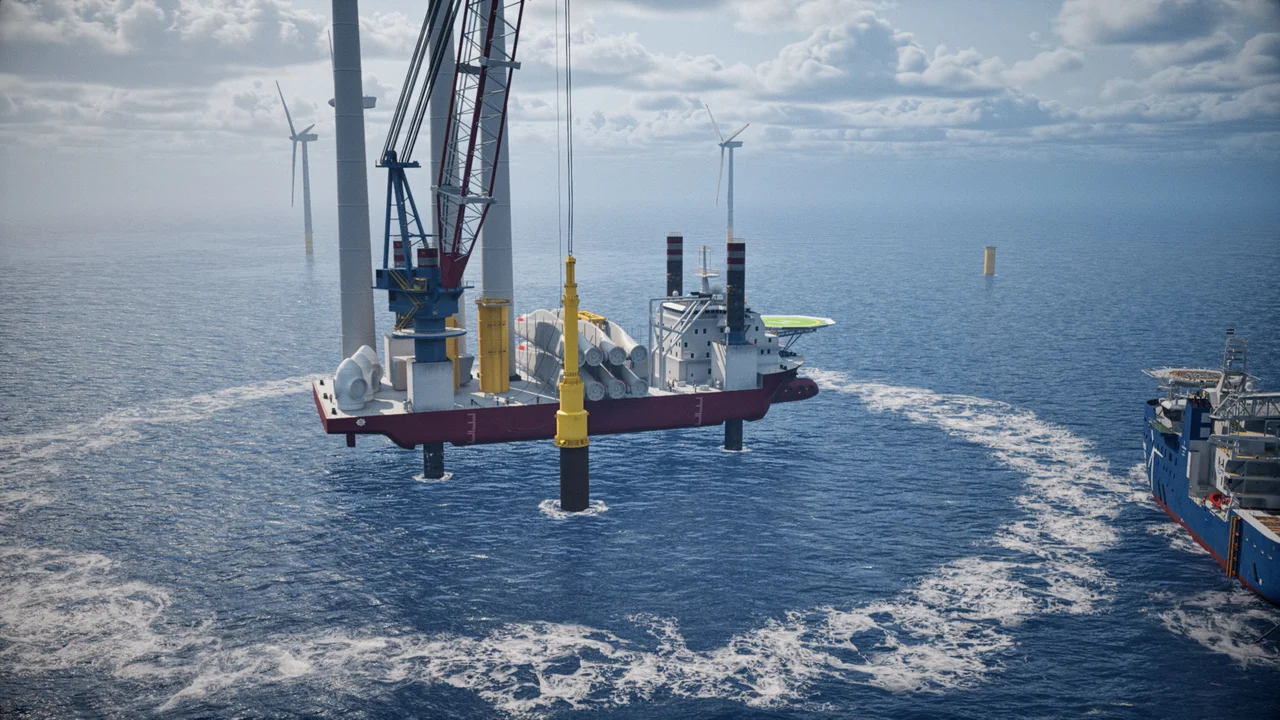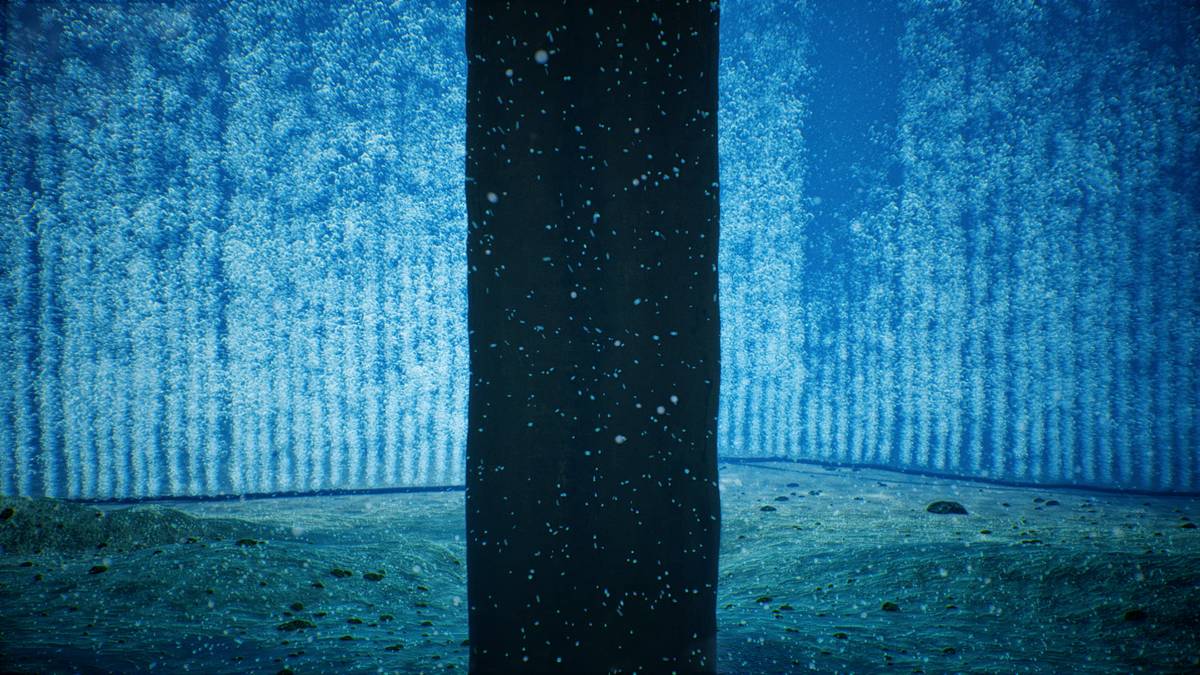
Air bubble screens
One of the ways to mitigate noise is with air bubble screens. The Joint Industry Project called Bubbles JIP research project aimed to improve underwater noise mitigation measures, particularly focusing on using air bubble curtains in offshore wind construction projects. Erik-Jan de Ridder, senior project manager at MARIN, is contributing to this project. "These bubble screens are generated using a hose placed on the seabed in a loop around the pile driving site; Air compressors are on a support vessel pressurising the hose. Through holes in the hose, air bubbles enter the water, and a bubble curtain is generated," he says.
The fundamental knowledge of the working mechanisms of bubble curtains is known, but the coupling to the offshore environment is limited. The current application of bubble curtains is mainly based on experience from previous offshore wind construction projects. However, it is not fully understood what the effect is of external factors, like current, waves, …. resulting in variations in the performance of bubble curtains. For offshore contractors and (renewable) energy companies, a better understanding would enable better engineering of bubble curtains, leading to lower risk/cost and noise levels for the local environment."
Although experimentally proven, current bubble technology is reaching its limits, especially with the increasing size of wind turbines and water depths. Bubbles JIP seeks to reduce the impact of these limits by researching variables such as pressure, hose length, compressors, nozzles, bubble size, and influences of current, wave action, and salty water. A better understanding of these mechanisms will result in more efficient air curtains, which in turn will lead to better control of noise levels and meet specific noise requirements of the government.

Near-field and far-field
Erik-Jan de Ridder makes a distinction between near-field and far-field noise mitigation during pile driving. "Nearfield systems focus directly on the source, while far-field systems maintain a certain distance between noise source and noise mitigation," he says. Bubble curtains are used for far-field noise mitigation.
A bubble screen for underwater noise mitigation works by releasing a stream of bubbles into the water, which creates a barrier that absorbs and disperses sound waves, effectively reducing underwater noise levels. As sound travels through water more efficiently than in air, the bubbles disrupt the transmission of sound waves, reducing their intensity and their impact on marine life and underwater environments.
Best practice
The project involved validating existing computer models and experimental measurements in a controlled freshwater environment in a basin at MARIN. Additionally, we tested at the harbour of IHC in Rotterdam."
The main findings, lessons learned, and recommendations to improve the working of the bubble screens were collected in a first draft of a best practice document. Furthermore, the partners concluded that the topic was more complex than previously expected and additional research is required to fully understand the physics of a bubble curtain in different environmental conditions.
Depending on the site condition, the bubble screen should be designed differently. Bubbles JIP allows better estimation of what is needed to mitigate noise in advance. Prevents surprises and perhaps delays during wind farm installation.
-
For a more detailed understanding of multiphase flows applied for air bubble curtains, we wanted to get a complete image of a bubble curtain. Therefore, we needed a lot of measurements spread in both time and space. This had not been done before on the scale we had in mind. So, MARIN developed a new measurement instrument for this project, which is now used for other projects as well.
Collaboration
Bubbles JIP (Joint Industry Project) is part of the TKI Offshore Energy programme and was executed in close collaboration with industry partners and research institutes. TNO provided acoustics expertise, while TU Delft specialised in modelling process systems and also contributed to acoustic research, and MARIN was responsible for hydrodynamic expertise. The industry partners participated actively in the project by delivering full-scale data, performing medium-scale tests and summarising the findings in a best practice document.
In the Bubbles JIP project, we gathered a lot of data and gained a lot of insight. However, there are still a lot of uncertainties. Therefore, we would like to dive deeper into this data to get an even better understanding in a follow-up project.” Erik-Jan de Ridder emphasises the need for full-scale measurements to test the effectiveness of bubble curtains at sea. "We are now looking for partners for this next phase."
So, if you want to minimise the impact of offshore wind farm installation on marine life, and if you want to be involved in this follow-up project on noise mitigation with bubble curtains? Contact Erik Jan de Ridder.
This article is a part of the Project in the Spotlight series. You can watch more here.
